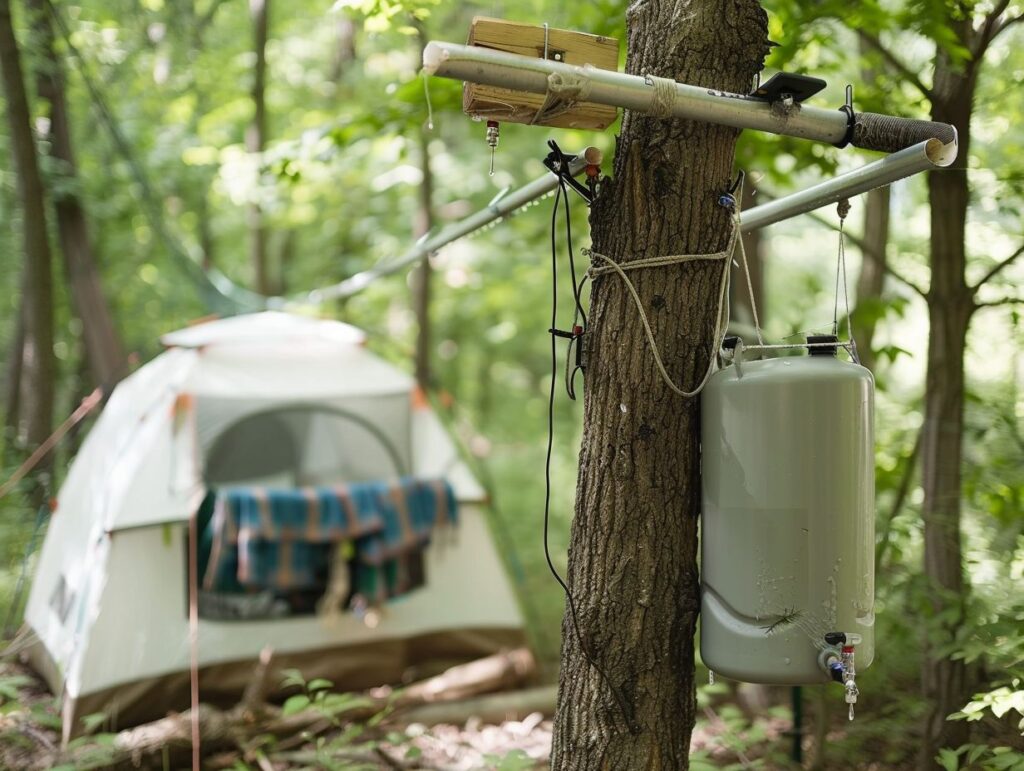Heading out into the great outdoors can be a rejuvenating experience, but it often comes with its fair share of challenges, such as limited access to basic amenities like showers.
With a DIY camp shower, you can bring a touch of comfort to your camping adventures.
We will discuss the benefits of building a DIY camp shower, the essential materials needed, step-by-step instructions on how to build one, tips on using and maintaining it, and some handy tips to enhance your shower experience in the wilderness.
So, let’s get started on creating your own portable oasis in the woods!
Key Takeaways:
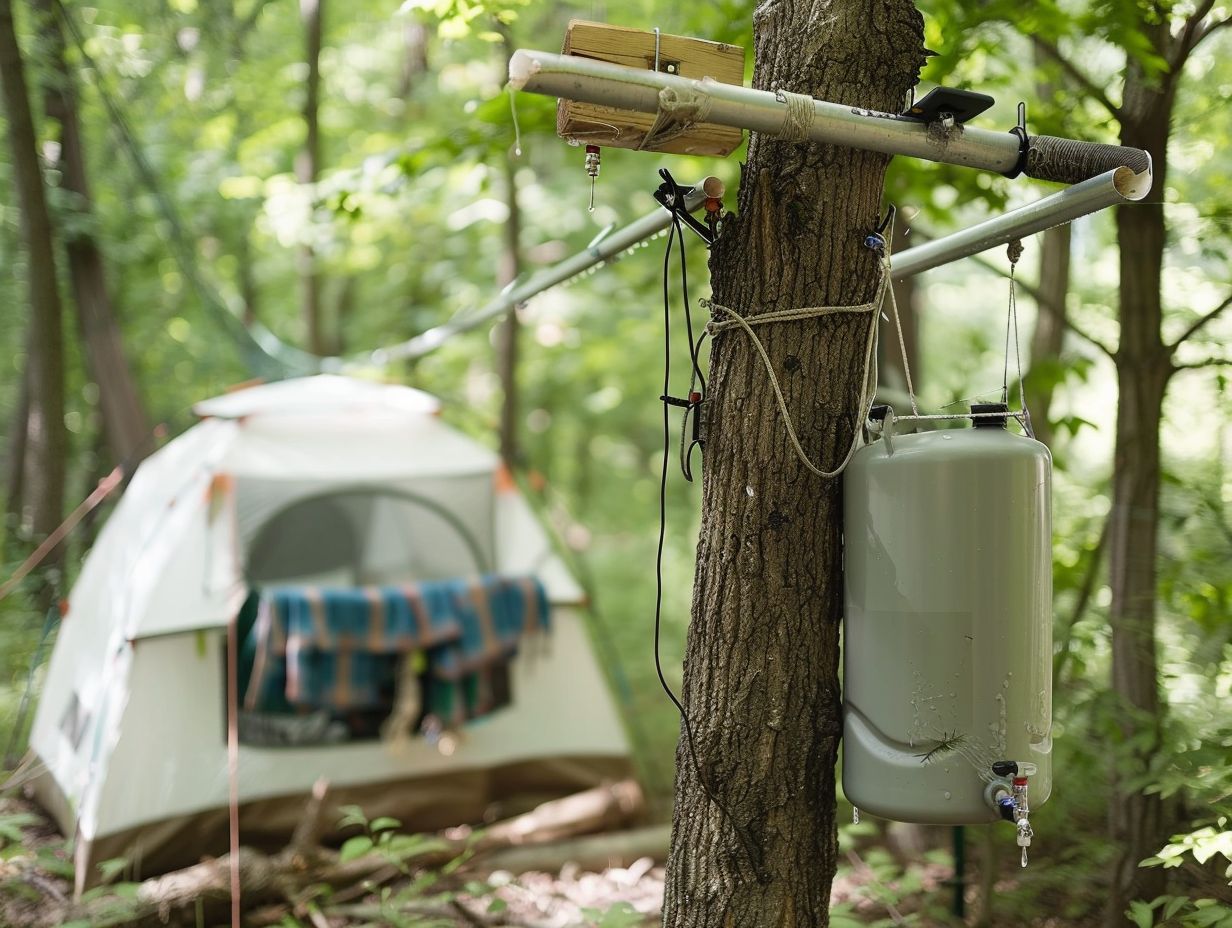
- Building a DIY camp shower can provide convenience, comfort, and hygiene while camping.
- Essential materials for a DIY camp shower include a water container, shower head, and enclosure material.
- Maintaining a DIY camp shower involves regular cleaning, proper storage, and checking for any damage.
How to Build a DIY Camp Shower?
- The construction of a self-made camp shower involves a series of steps to establish a reliable and effective system.
- These steps include building a sturdy base, fitting a water system equipped with a shower head, and ensuring sufficient water flow.
Step 1: Create a Base for the Shower
The initial phase of constructing a DIY camp shower involves establishing a secure base for the shower area to maintain safety and stability during showering. To create a robust foundation for the camp shower, it is recommended to begin by identifying a level and secure surface.
Wooden pallets are a suitable option for the base as they offer stability and elevation to prevent water accumulation. Alternatively, if opting for a flat ground surface, it is imperative to ensure that it is compacted and level to support the weight of the shower structure.
This foundational step holds significant importance for the overall resilience and safety of the camp shower setup, guaranteeing a comfortable and stress-free showering experience in outdoor settings.
Step 2: Set Up the Water System
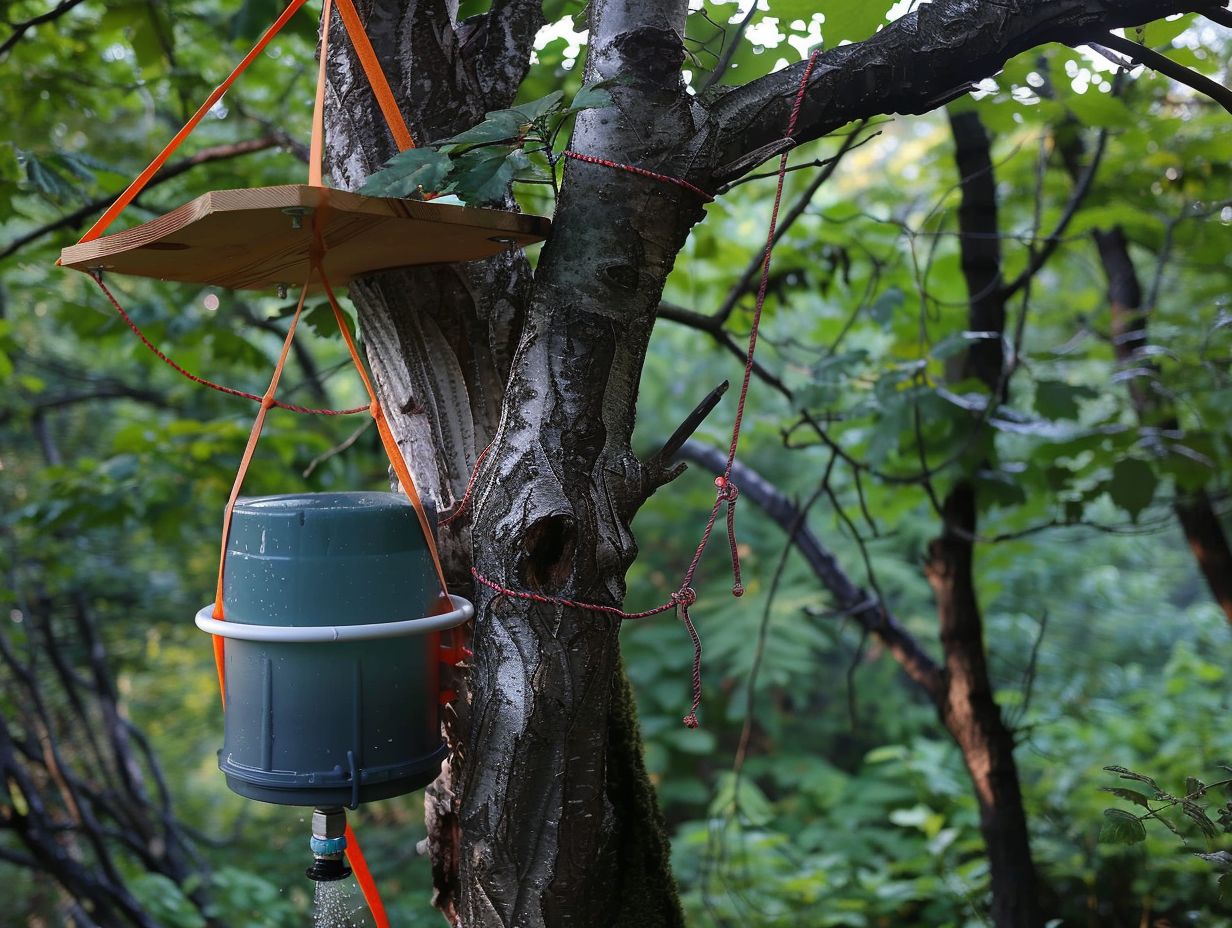
The installation of the water system involves the connection of a reliable pump to a bucket and the use of a garden hose to direct the water flow towards the shower head. To establish a consistent and regulated water flow, the first step is to securely attach the pump to the side of the bucket.
Subsequently, connect one end of the garden hose to the pump outlet and the other end to the shower head. After securing all components, proceed to fill the bucket with water and activate the pump to start a system test. It is vital to closely monitor the operation to identify any leaks or interruptions in the water flow. This initial test is crucial to anticipate any potential issues before extensive use of the system.
Step 3: Create the Shower Enclosure
Establishing a shower enclosure is essential for ensuring privacy and comfort, a goal that can be accomplished by utilising a shower curtain fastened with bungee cords or paracord.
When preparing the shower enclosure, it is advisable to start by selecting a suitable location that offers both convenience and privacy. Opt for a flat and stable area, ideally in proximity to a water source. Following the identification of the location, proceed to affix the shower curtain using bungee cords or paracord to guarantee its stability even in windy conditions.
It is imperative that the enclosure provides adequate coverage to shield individuals from external elements while upholding a sense of privacy. Additionally, it is recommended to include a mat or tarp underneath the enclosure to prevent slippage and maintain cleanliness in the designated area.
Step 4: Add Finishing Touches
To complete the assembly of your DIY camp shower, it is imperative to properly secure the shower head using hose clips, install a shower curtain liner, and ensure the structural integrity of the camp shower enclosure.
After securely fastening the shower head, the next step involves adding a liner to the shower curtain for enhanced protection against water splashes. This seemingly straightforward yet crucial measure plays a pivotal role in preserving the cleanliness and longevity of your DIY camp shower setup.
Attention should be directed towards assessing the overall construction of the camp shower enclosure to ascertain its stability and durability. Careful evaluation of the shower head’s height and positioning is recommended to guarantee optimal functionality and user comfort. Adhering to these final procedures will result in a fully operational and gratifying camping shower experience.
How to Use a DIY Camp Shower?
Effectively utilising a DIY camp shower requires a comprehensive understanding of the shower procedure, including tasks such as water filling and heating, as well as adeptly managing water flow to facilitate an enjoyable and comfortable showering experience.
Step 1: Fill the Water System
The initial step in utilising the DIY camp shower involves filling the water system by pouring water into the collapsible bucket, ensuring an adequate supply for the shower. Upon completing the water filling process, it is imperative to securely close the lid to prevent spillage during transportation. The use of clean water is essential to maintain a hygienic showering environment.
Ahead of filling the bucket, it is advised to verify its capacity to confirm it accommodates a sufficient amount of water for showering requirements.
The utilisation of a collapsible bucket facilitates easy storage and transportation of the water system without occupying significant space in camping equipment. Noteworthy is the fact that efficient water management plays a pivotal role in the overall success of a camping excursion.
Step 2: Warm Up the Water
To prepare the water for a DIY camp shower, individuals may choose to utilise a kettle or a solar shower, such as the Sun Shower, for a more environmentally conscious alternative.
A kettle presents a traditional and efficient method for promptly heating water for an outdoor shower. The process involves filling the kettle with water, positioning it on a heat source like a camp stove, and waiting for the water to reach boiling point. Kettles are available in various sizes to accommodate diverse requirements.
Conversely, a solar shower harnesses solar energy to gradually warm the water. This sustainable option operates without the need for electricity or fuel. To ensure a comfortable shower experience and prevent overheating, individuals may opt to employ a thermometer to monitor the water temperature closely.
Step 3: Have a Shower
During the showering process, it is recommended to adjust the water flow by utilising the shower head and ensuring that the shower curtain is securely fastened to maintain privacy. It is advisable to use a biodegradable soap, such as Dr. Bronner’s Pure Castile Liquid Soap, to promote environmental sustainability during the cleansing routine.
Following the adjustments to water temperature and privacy measures, it is essential to thoroughly wet the body from head to toe. Commence the cleansing process by applying a modest amount of shampoo to the hair and delicately massaging it into the scalp before rinsing.
Subsequently, proceed to lather the body with the eco-friendly soap, ensuring a comprehensive cleaning of all body areas. Take the opportunity to savour the soothing warmth of the water and the invigorating fragrance of the natural soap. It is advisable to conserve water and lessen environmental impact by turning off the water while lathering with soap.
How to Maintain a DIY Camp Shower?
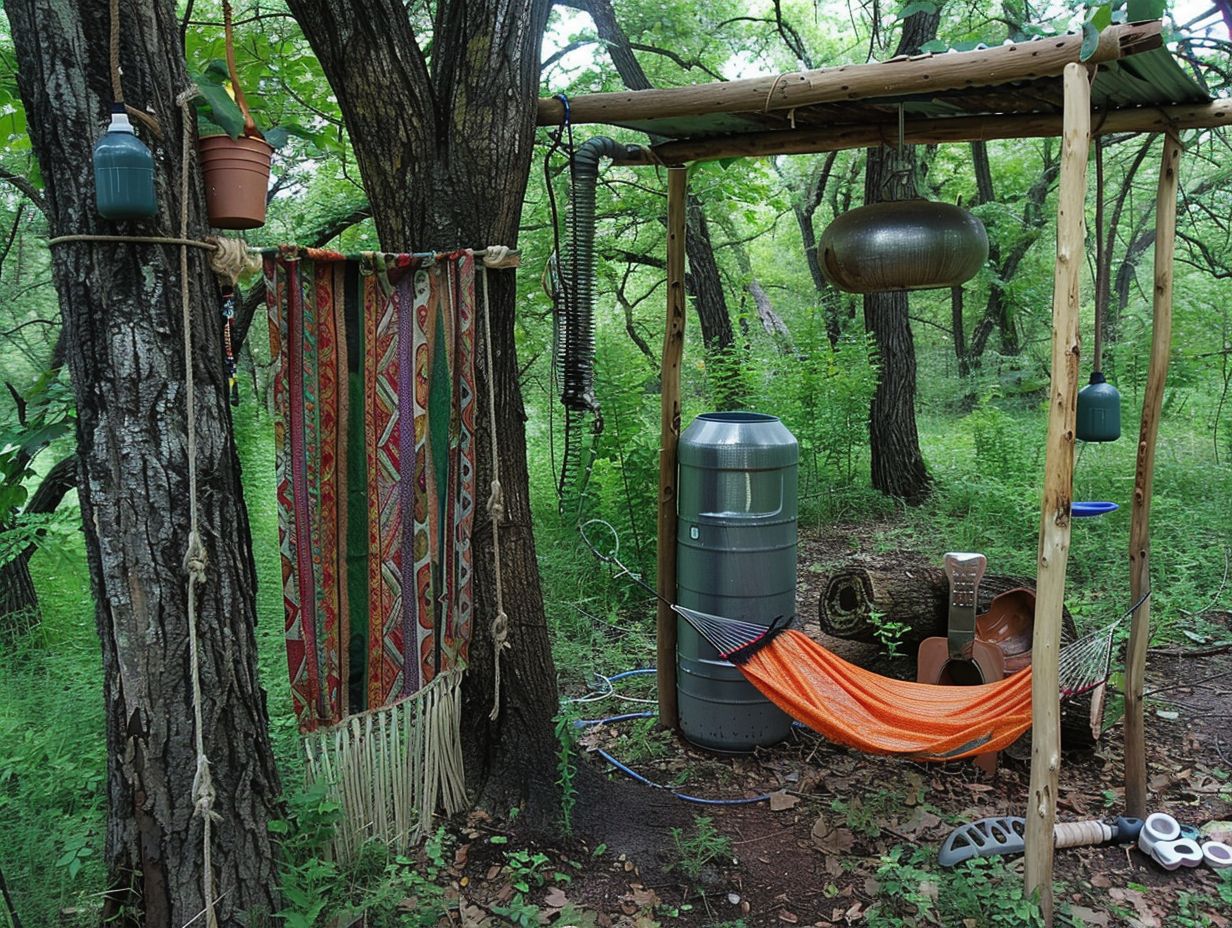
Ensuring the upkeep of a DIY camp shower is essential for its durability and operational efficiency. This maintenance regime includes periodic cleaning, appropriate storage practices, and regular inspection for any signs of damage or deterioration.
Step 1: Clean the Shower After Each Use
It is recommended to clean the shower area and its components after each use with water and a mild, biodegradable soap such as Dr. Bronner’s soap to prevent the accumulation of residue and maintain proper hygiene.
During the cleaning process, it is important to pay attention not only to the walls but also to the shower head, bucket, and enclosure to prevent the growth of mould and bacteria.
To begin, dilute the biodegradable soap in water and utilise a soft sponge or cloth to thoroughly clean all surfaces. Rinse each component diligently to eliminate any soap residue, as this residue can contribute to build-up over time.
Regularly cleaning all aspects of the shower area using environmentally friendly cleaning products serves not only to preserve the environment but also to establish a healthier environment for both yourself and your family.
Step 2: Store Properly When Not in Use
To maintain the longevity of the DIY camp shower components, such as the collapsible bucket, shower tent, and paracord, it is advised to store them in a dry and clean location when not in use.
After concluding each camping expedition, it is important to ensure that all components are thoroughly dried before being stored. This precautionary step is essential in preventing the development of mould and mildew, ultimately contributing to an extended lifespan of the equipment.
Utilising storage bags to organise and safeguard the components is recommended. Optimal storage conditions involve placing the items in a cool, dry environment that is shielded from direct sunlight to mitigate potential damage from UV rays. It is crucial to bear in mind that moisture poses a significant threat to outdoor equipment; hence, it is imperative to protect the camp shower components from any potential water exposure.
Step 3: Check for Any Damage or Wear and Tear
It is important to consistently conduct thorough examinations of your DIY camp shower to identify any signs of damage or wear and tear, particularly focusing on critical components such as hose clips and the shower pump.
These routine assessments play a vital role in enhancing the durability and effectiveness of your camp shower. Detection of leaks in the hose clips or indications of corrosion on the shower pump can serve as early warning signs of potential issues that require prompt attention.
Additionally, it is imperative to scrutinise the shower for any loosely fitting parts or worn-out components that could impede its functionality.
By proactively searching for these warning indicators during your regular inspections, you can promptly address any issues, thereby preventing the escalation of damage and ensuring a secure and dependable showering experience during your outdoor excursions.
What Are Some Tips for Using a DIY Camp Shower?
Effectively utilising a self-assembled camp shower encompasses a set of guidelines, including the use of biodegradable soap, taking brief showers, and ensuring the proper disposal of greywater to mitigate environmental repercussions.
Tip 1: Use Biodegradable Soap
Utilising biodegradable soap, such as Dr. Bronner’s Pure Castile Liquid Soap, plays a vital role in minimising one’s environmental footprint, particularly whilst engaging in camping activities.
In contrast to conventional soaps containing harmful chemicals and synthetic compounds, biodegradable soaps are formulated from natural, plant-based materials that readily decompose in the environment. Opting for biodegradable soap facilitates the reduction of water pollution and the preservation of aquatic ecosystems.
Several reputable biodegradable soap brands worth considering are Seventh Generation, Mrs. Meyer’s Clean Day, and Ecover. These brands offer a diverse selection of scents and formulations, catering to various preferences, all the while allowing individuals to uphold a sense of environmental responsibility.
Tip 2: Take Short Showers
It is crucial to adhere to the practice of having quick showers to promote water conservation and maintain the efficiency and practicality of your camp shower while engaging in a camping trip. Additionally, limiting shower duration in remote locations not only minimises environmental impact but also ensures a sufficient water supply for essential needs.
To optimise the effectiveness of short showers, one can consider turning off the water flow while applying soap or shampoo. Using a low-flow shower head can further reduce water usage without compromising water pressure. Using a timer can help monitor shower duration, aiming to complete showers within less than five minutes to improve water efficiency during camping activities.
Tip 3: Use a shower mat or towel
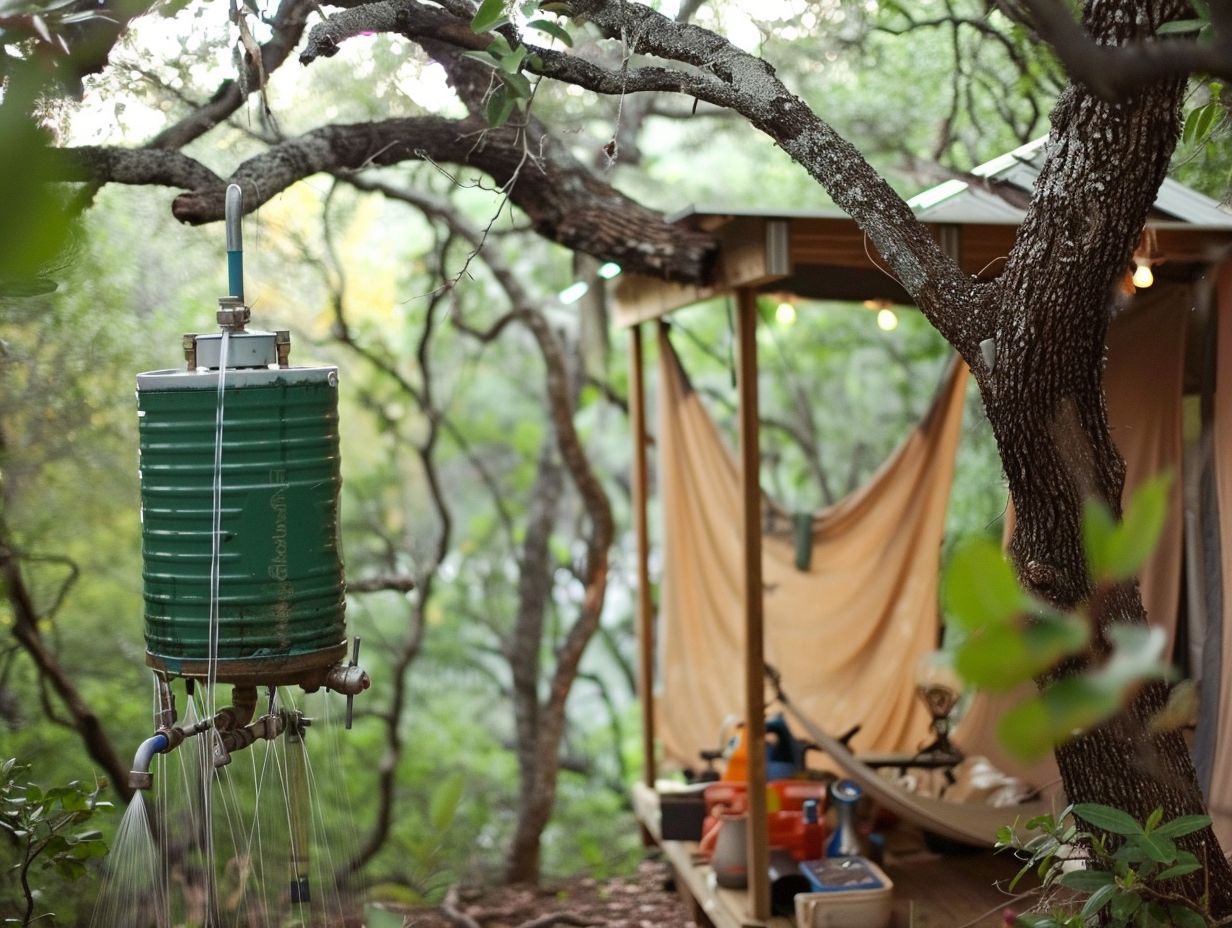
The utilisation of a dependable shower mat or towel stands to notably refine the showering experience by preserving the cleanliness and safety of one’s feet.
Tip 4: Dispose of the Greywater Properly
The appropriate disposal of greywater is essential for the adherence to leave-no-trace principles and the upholding of environmental responsibility within the campsite setting.
To conform to best practices, it is advisable to observe several key guidelines when executing the disposal of greywater. It is always prudent to consult local authorities to ascertain specific regulations governing greywater disposal, as these stipulations can vary by geographical location.
One prevalent method for the disposal of greywater involves the utilisation of a mulch pit, which functions as a medium for filtering and allowing the water to be absorbed into the soil. Alternatively, individuals may opt to employ designated greywater tanks or receptacles to gather and appropriately dispose of the greywater.
It is imperative to emphasise that by adhering to these guidelines and demonstrating a conscientious awareness of the environmental repercussions, individuals contribute to the protection of natural habitats and the preservation of the aesthetic appeal of outdoor environments.
Frequently Asked Questions
What materials do I need to build a DIY camp shower?
You will need a large water container, a shower head, a hose, a shower curtain, hooks, and a sturdy base to hold the shower. You may also want to have a pump or gravity-fed system to provide water pressure.
How do I attach the shower head to the water container?
You can drill a hole into the lid of the water container and secure the shower head with waterproof sealant. Alternatively, you can use a hose clamp to attach the shower head to the container.
How can I create privacy for the shower?
You can hang a shower curtain around the area using hooks or clips. If you have a pop-up tent, you can also use that as a private shower space.
Do I need to heat the water for a DIY camp shower?
It depends on your preference. You can use either cold or warm water. If you prefer warm water, you can heat it using a camping stove or by leaving the water container in the sun for a few hours.
How can I make the shower more comfortable?
You can lay down a non-slip mat or towel on the shower base to prevent slips. You can also hang a towel or clothesline nearby to hang your towel and clothes while showering.
Are there any safety precautions I should take when using a DIY camp shower?
Yes, it is important to never leave the shower unattended while in use and to always ensure the water container is stable. It is also recommended to use biodegradable soap and to dispose of water properly to avoid contaminating the environment.

